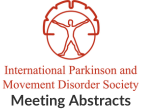Awake Bruxism, a case series of an underrecognized disorder
Objective: We present a series of 3 cases with Awake Bruxism (AB) and frontal dysfunction. Background: AB is an infrequent, daytime form of bruxism, described…Pseudodystonia due to Palmaris Brevis Syndrome: Case Report
Objective: We describe a case of pseudodystonia caused by palmaris brevis syndrome. Background: Palmaris brevis (PB) syndrome is a pseudodystonia characterized by spontaneous, involuntary, nonpainful…Botulinum Toxin Outcomes in Patients with Lower Limb Dystonia
Objective: To assess botulinum toxin outcomes in patients with lower limb dystonia. Background: One of the most effective treatments for dystonia is botulinum toxin (BoNT)…Development of a patient journey map for people living with cervical dystonia
Objective: As part of the ongoing European Reference Networks for Rare Neurological Diseases (ERN-RND) program, we aimed to develop a cervical dystonia patient journey map…A bitter syndrome as a cause of refractory movement disorders
Objective: Submit a case of GLUT-1 deficiency for consideration in the differential diagnosis of movement disorders and refractory epilepsies because early treatment will prevent progressive…Dystonia gravidarum: An emerging clinical entity
Objective: We describe a case of cervical dystonia in a 36 year-old, secundigravid, Caucasian woman at 8 weeks gestation. Background: Though uncommon, primary movement disorders…Benefits of Treatment with OnabotulinumtoxinA in Naive and Non-naive Patients with Cervical Dystonia are Sustained over Time: Preliminary Completer Analysis from CD PROBE
Objective: This analysis evaluated the sustained effects of onabotulinumtoxinA in patients with CD who were naive or non-naive to botulinum toxin at enrollment in CD…Post-stroke dystonia: Three unique cases
Objective: Describing 3 unique post-stroke dystonia cases. Background: Dystonia, the 2nd most common post-stroke movement disorder, presents commonly contralateral to the lesion, focally, and 9.5…Impact of Disease Severity on Presentation Subtype and OnabotulinumtoxinA Utilization in Patients with Cervical Dystonia: Results from the CD PROBE Completer Population
Objective: Examine the impact of cervical dystonia (CD) severity on presentation subtype and onabotulinumtoxinA utilization in the completer population from the CD PROBE study. Background:…Botulinum injections for idiopathic cervical dystonia: a longitudinal study
Objective: In this retrospective longitudinal study, we explored the efficacy of repeated BT injection sessions for idiopathic cervical dystonia (ICD). Background: Botulinum toxin (BT) injections…
- « Previous Page
- 1
- …
- 5
- 6
- 7
- 8
- 9
- …
- 19
- Next Page »
